How Political And Civil Rights Leader, Cissie Gool, became the Jewel of District Six.
Cissie Gool was a woman of action who walked the talk in taking up the struggle. Her podium was often the back of a truck, or a street corner. Many times she would be found leading a throng of marchers as she encouraged people to stand up and claim what was rightfully theirs. She once said; ‘Don’t watch the experiment; join the struggle; it’s yours, it’s mine; it’s ours. We shall resist.’ From her childhood she had been exposed to politics and she was not one to back down from a fight, especially if it was in the cause of justice.
Cissie Gool was born in Cape Town in 1897. One of South Africa’s most popular and renowned female political leaders, her father was the prominent politician, Dr Abdullah Abdurahman, leader of the African Peoples Organisation (APO) which he had helped to form in 1902. Abdurahman was also the first black South African to be elected to the Cape Town City Council in 1904. Gool attended Trafalgar High School and later earned Bachelor’s and Master’s degrees from the University of Cape Town, then in 1962 a law degree which she had pursued part-time over years. In 1919 she married Abdul Hamid Gool and was thereafter always known as Cissie Gool.
In the disenchantment and swing away from the Cape Liberal paternalistic political tradition a trend began in Cape politics which has continued since. Radicalism became an end in itself and a bizarre competitiveness emerged where each proponent wanted to postulate as more radical and purer in their beliefs.
In contrast, Cissie Gool’s political standard was to build unity and focus on key issues of concern to the majority of black working people and to extend this unity to include other class forces and formations which shared an interest in halting the progress of the neo-Nazi path down which the South African government was rapidly going. The ultra-radical and schismatic approach of some of her initial allies dogged her every move. Cissie however became adept at disarming this tendency and still managed to draw in diverse opponents of South Africa’s ‘new right.’ It however, left her open to criticism of ‘ideological incorrectness’ and being ‘tainted’ from both the vociferous Workers Party of South Africa and sometimes from some in her own South African Communist Party or SACP.
Cissie Gool went through three graduations to come into her own as a formidable politician. She first had to throw off the powerful Abdurahman brand of her father and effectively moved on when she married Dr Gool. But her husband and his broader family’s politics also smothered Cissie who rapidly outgrew its narrow confines. Both of these were graduations of a sort—from the patriarchy of the men in her life. Then there was the graduation from the boxed-in world of the University of Cape Town which offered an exceptional education, but which came with other shackles of Cape paternal liberalism and colonialism which restricted the free thinking of an anti-colonialist.
Cissie Gool found that she had a public voice which appealed to the people, after her first major address on women’s enfranchisement in 1930. She was protesting the fact that only white women had secured the right to vote. What made Cissie different to many others was first demonstrated at this meeting. She got to a point in her speech when she said; ‘talk was not good enough’ and urging the people to follow her, she immediately led them in an impromptu march to parliament to confront Hertzog and his ministers.
Cissie Gool, her mother Nellie and a young communist Latvian immigrant whom Cissie had befriended, Ray Alexander, a trades unionist, participated in many public meetings following that march to parliament, demanding the vote for all women.
In 1935, she joined with Communist Party members Johnny Gomas and James La Guma in founding the multiracial National Liberation League (NLL), and served as its first president. In 1938, an offshoot from the NNL involving African and Indian leftists created a larger organization called the Non-Europe United Front, and Gool was again elected as its president. In 1939, the NEUF staged a march in central Cape Town, estimated to invlove between 5,000 and 10,000 people protesting new segregation measures, some of which were shelved as a result. In the same year, in an overhaul of the Communist Party leadership, Gool became both a party member and a member of its Politburo. Gool was elected to the Cape Town City Council in 1938, and remained a member until her death despite being a ‘named’ communist under the Suppression of Communism Act of 1950.
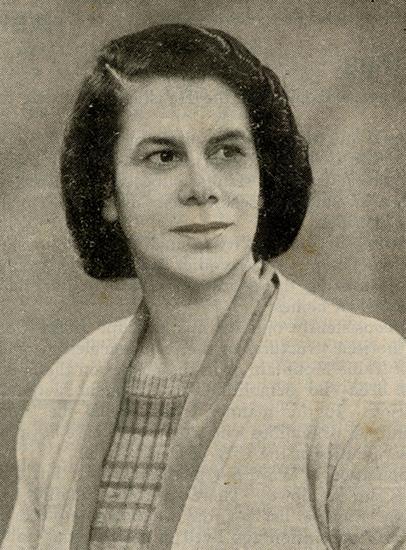
Cissie Gool.
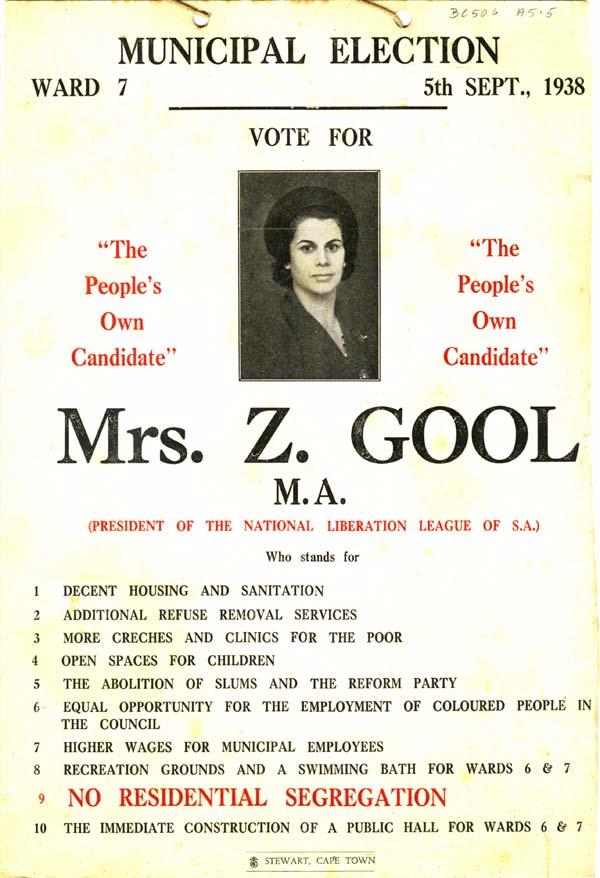
Cissie was in the Municipal Election in 1938.
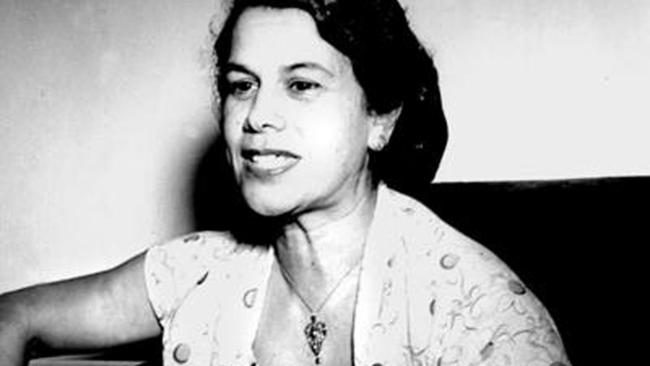
Cissie, as she is known affectionately to most people in Cape Town, has been a herion in public affairs chiefly because of the fearless way she has championed the non-European cause.

Franchise Action Committee Protest, 1940s. Cissie Gool is pictured here (front right).
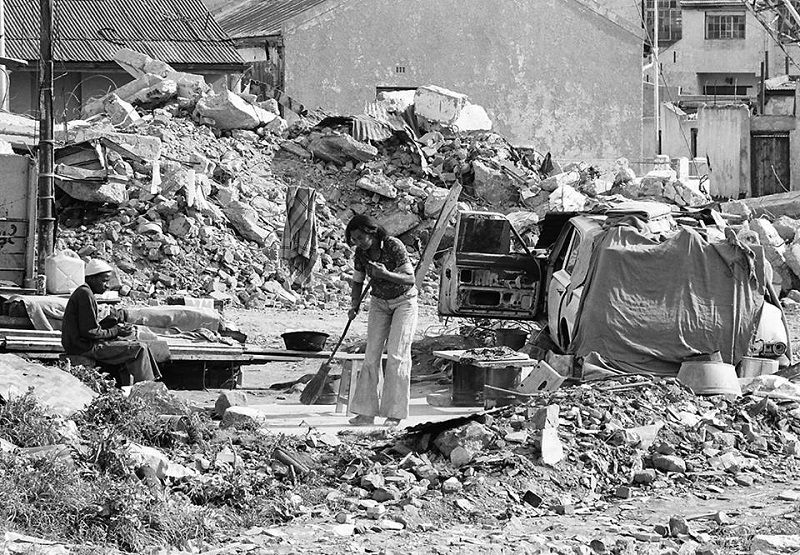
When the apartheid government swooped on District Six, Cape Town in 1965, forcibly removing its occupants and declaring the area a ‘whites-only’ zone, the rich fabric of an impoverished but vibrant community was torn to shreds.
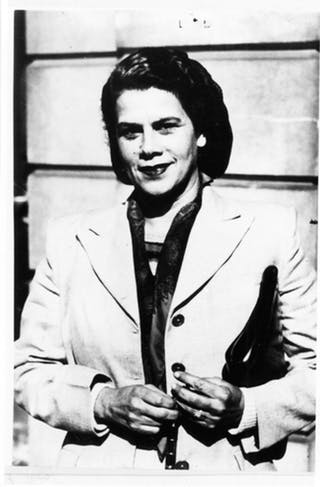
While Cissie was a councillor, she won a battle against the government. The government wanted Cape town to segregate buses. Cissie and the National League fought back and won. This was her first battle but she loses many others.